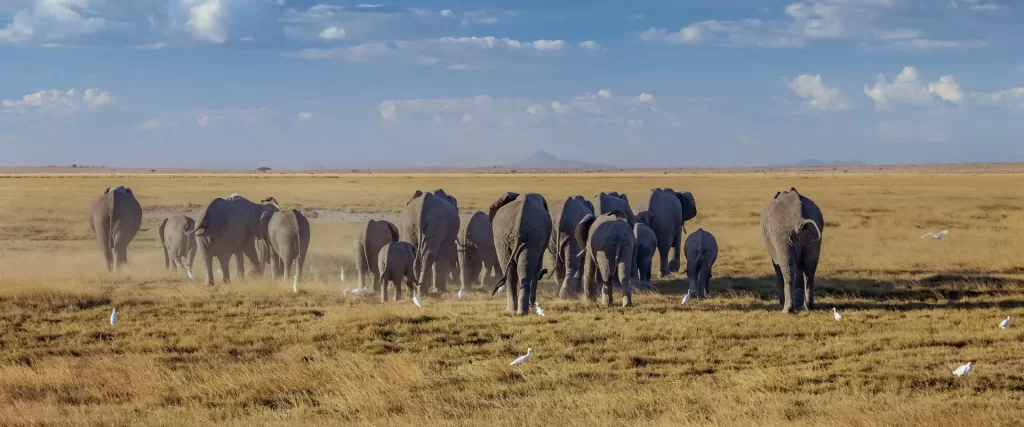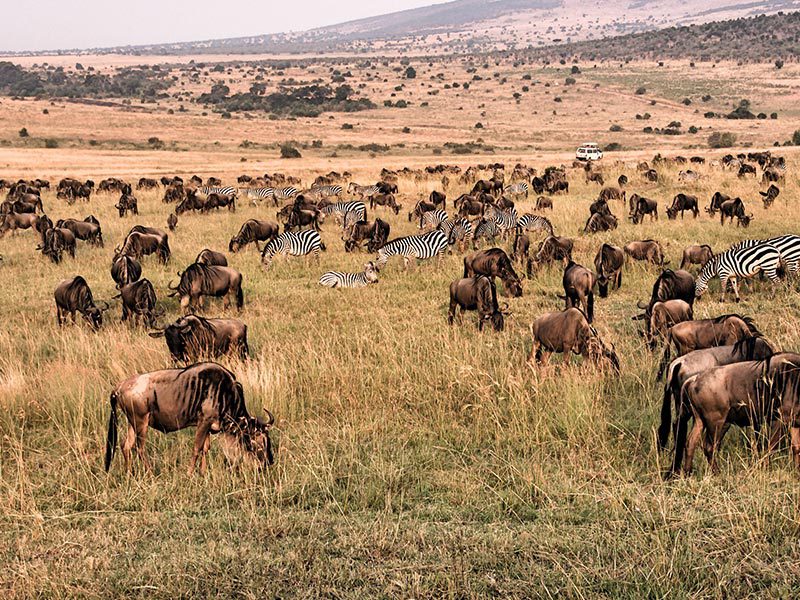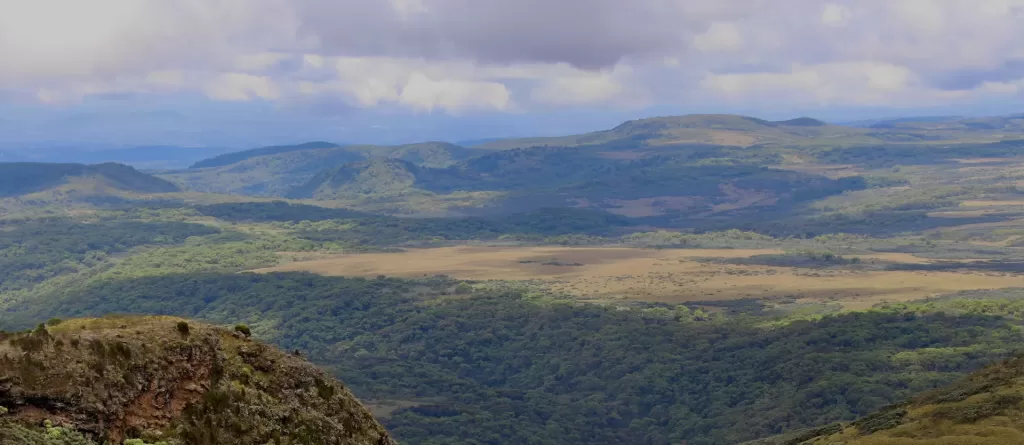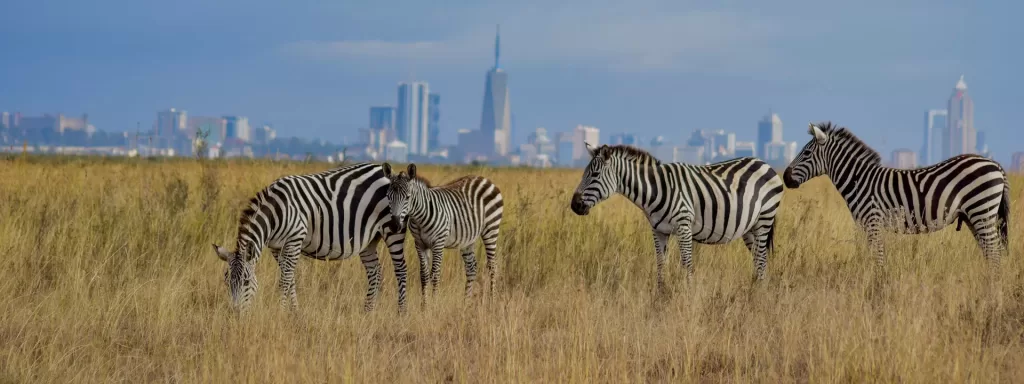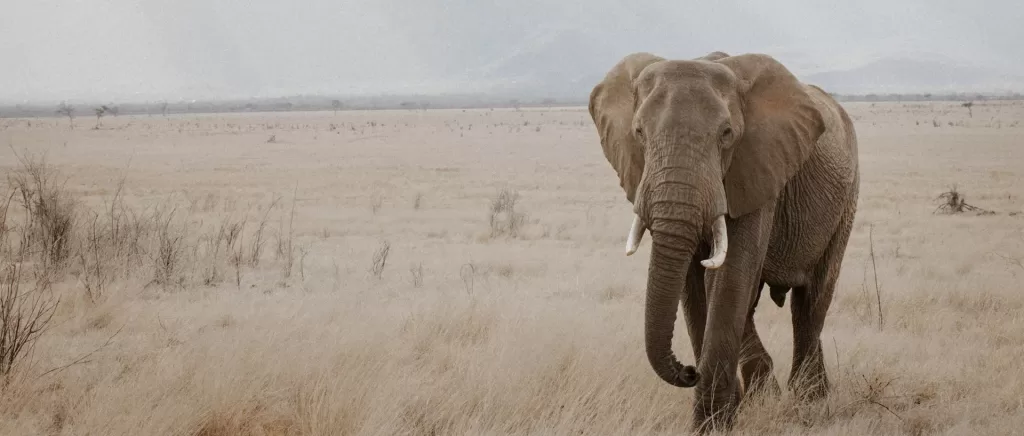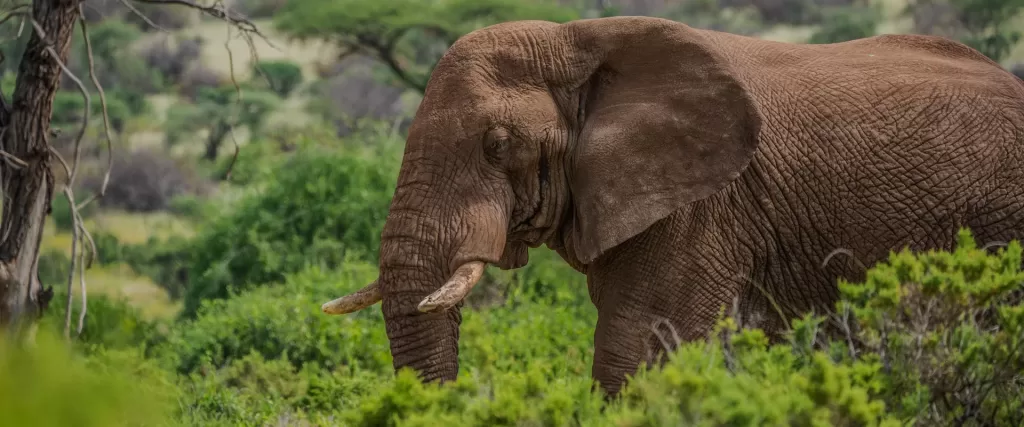Meru National Park
Meru National Park is located in central Kenya about 220 miles (350 km) northeast of Nairobi. It sits northeast of Mount Kenya. Meru National Park encompasses an area of 336 square miles (870 sq km). The Meru National Park was made famous through the book and film Born Free based on George and Joy Adamson’s work where a lioness named Elsa was raised.
The elevation varies across the Meru National Park with the lowest spot occurring in the southeastern part of the park along the Tana River. The foothills of the Nyambeni Range account for the highest point at 3,400 feet (1,036 m).
The Tana River and Adamson’s Falls are also key features of the national park. Adamson’s Falls is a cascading waterfall across rugged rocky terrain.
The Tana River combined with the Rojerwero and Ura rivers are the leading sources of water. Each of these rivers and related tributaries is lined with riverine forest along with stands of dom and raphia palms.
The northern section of the Meru National Park features rainforests with the majority of the park covered in an array of bushes, grasslands, and acacia trees.
Things to do in Meru National Park
Game Viewing
The Meru National Park is home to a huge variety of animals, including the Big Five: lion, leopard, rhinoceros, elephant, and Cape buffalo. Look out for zebras and gazelles as they roam across the grasslands as well. Look out for Hippos as they sunbathe on the banks of the various rivers and lakes.
Visit the Burial site of Joy Adamson and Elsa the Lioness
Visit the memorial site in recognition of George and Joy Adamson a Dutch couple who were the first explorers to enter the Meru National Park and raised Elsa the Lioness. Visitors interested in learning about their interesting history and conservation works can find all this information here.
Nature Walks and Hiking
These guided walks are typically led by a park ranger and take visitors through the park’s grasslands, forests, and wetlands. Visitors can learn about the different plant species in the park, observe the wildlife, and take in the stunning scenery.
Bisanadi Hike: The Bisanadi Hike takes visitors on a guided trek through the park’s Bisanadi Reserve, which is known for its large herds of elephants. The hike offers stunning views of the nearby Tana River.
Kilima Mbogo Hike: The Kilima Mbogo Hike takes visitors on a guided trek up Kilima Mbogo, a hill that offers panoramic views of the park and surrounding landscape. On this hike, visitors can also learn about the history of the Meru National Park and its conservation efforts.
Explore the Black and White Rhino Sanctuary
The Rhino Sanctuary is home to 40 white and 20 black rhinos protected in a 50 sq km extensively fenced area. You can visit this sanctuary and enjoy sightings of these exciting creatures at a closer range.
Visit Adamson’s Falls
The falls are situated in the cavern of Hastings and were named after conservationists George and Joy Adamson. The Adamsons waterfalls are such a stunning sight 50 meters high waterfall. It takes around 2 to 3 hours to hike to reach the Adamsons waterfalls depending on the guest’s physical ability and potential.
The hike offers chances of panoramic views of the landscape as you listen to the sound of the water coursing through the rocks, Adamson waterfalls can be accessed at different levels and are most attractive from the top.
Bird Watching
Meru National Park is home to almost 400 bird species. Bird species include the Lesser Kestrel, Vulturine Guineafowl, Secretary Bird, African Pygmy Falcon, African Fish Eagle, Taita Falcon, Red-winged Lark, Martial Eagle, Yellow-necked Spurfowl, Somali Ostrich, Von der Decken’s Hornbill, Grey-crested Helmetshrike.
Other bird species include Yellow-bellied Eremomela, Black-throated Wattle-eye, Rosy-patched Bushshrike, Northern Carmine Bee-eater, Red-throated Wryneck, Golden-breasted Starling, Rufous-naped Lark, Yellow-throated Sandgrouse. Endemic birds such as Hinde’s babbler and golden palm weaver can also be seen.
Community-Based / Cultural Tours
On the slopes of Nyambene hills to the West of the park are the Meru people who are predominantly agriculturalists with hectares of Catha edulis plants (Miraa) and coffee. The Kamba, Borana, and Orma pastoralist communities also border the park.
The local community provides a rich cultural diversity and experience to visitors who want to experience the way of life of the community. The Tharaka community is close to Meru National Park and gives an insight into the traditional lifestyle and cultures of people living here.
Explore the Tharaka Cultural Museum
This museum is located in the nearby town of Tharaka and is dedicated to preserving the culture and history of the Tharaka people. The Tharaka community was also known as beekeepers and cattle keepers on a small scale. The museum features exhibits on traditional Tharaka crafts, music, and dance, as well as displays of historical artifacts.
Ngare Ndare Cultural Village
This village is located within Meru National Park and is home to the Borana people. Visitors can learn about the Borana culture and way of life, as well as enjoy traditional dances and songs performed by the locals.
Mughwango Cultural Center
This center is located near the Meru National Park main gate and is a great place to learn about the Meru people’s traditional way of life. The center features exhibits on Meru customs, history, and beliefs, as well as displays of traditional clothing and artifacts.
Visiting local communities
Many local communities surrounding Meru National Park offer opportunities to experience traditional ways of life and cultural practices. Visitors can arrange to visit villages and participate in activities such as milking cows, cooking traditional meals, and learning about local customs and beliefs.
Where to stay in Meru National Park
Elewana Elsas Kopje
This lodge is named after Elsa the Lioness and offers nine lodging options that celebrate the life and work of Joy and George Adamson. This boutique lodge is situated on the top of Mughwango Hill just above the original site of George’s Camp at the heart of the park.
The architecture preserves the natural features of the wilderness, including the utilization of volcanic rock outcrops in the design and hand-crafted furniture built from tree trucks. There are 6 Ensuite Cottages categorized into, a Family Cottage that is a spacious 2-bedroom cottage with a double and a twin room, both en-suite, a beautiful living room, a large private deck, and an outside bath by the master bedroom.
The 3 Honeymoon Suites overlook the vast plains of Meru National Park. Two of the suites have romantic outside baths and one suite has three levels featuring a private sitting room, a main bedroom with an en-suite bathroom, and a small private deck.
A Private House overlooking the vast plains of Meru National Park and facing Mt Kenya. The house consists of one en-suite master bedroom with a dressing room, one en-suite twin bedroom, a large dining and sitting room, a private garden, and an infinity swimming pool.
Rhino River Camp
The camp is located on the border of the park on 60 acres of wilderness. The camp has a total of 7 tents all ensuite. 5 of the tents are built out of sumptuous caramel canvas and sustainably grown wood, raised on platforms above the gently flowing Kindani River.
2 tents are located away from the river, facing a natural forest for those who prefer to be away from the sound of Kindani River running water. 2 tents are river-facing and have their own private ‘zen’ area where you can meditate.
Other facilities include a large central public area with a bar, lounge, and library. The swimming pool is situated next to the stream, and surrounded by comfortable wood decking.
Offbeat Meru Camp
The camp is located in Bisanadi National Reserve which shares a border with Meru National Park. The camp features six tents; two twins, three doubles, and one family unit. Each tent is furnished with a huge iron bed, and mosquito net and has its en-suite bathroom, with a traditional hot safari shower and flushing loo. Each tent also has 24-hour solar lighting. There is a bar and library area within the main camp which is lit by traditional tilly lamps and the swimming pool.
Ikweta Safari Camp
The camp is located just two kilometers from the main Murera Gate entrance of Meru Park. It features 10 canvas guest tents, all of which have private verandahs, convenient luggage racks, writing desks, and en-suite bathrooms. All tents are east-facing for guests to enjoy the spectacular sunrise over Meru National Park from the comfort of their beds. Other facilities include a restaurant, lounge, bar, and swimming pool.
Getting to Meru National Park
By road, there are two routes to Meru National Park from Nairobi, The first is the main road via Nyeri, Nanyuki, and Meru which is 348 kilometers from Nairobi with entrance to the park via Maua to Murera Gate and the second route is via Embu-Meru road 290 kilometers from Nairobi with park entrance via Ura Gate. This is about a 5-hour drive from Nairobi.
Meru National Park is accessible by either Air using scheduled flights to the Main airstrip at Kina, Mulika, and Elsa’s Kopje airstrip. The flight takes 46min – 1hr.
The Best Time to Visit the Park
Meru National Park can be visited throughout the year, but wildlife viewing is best in the long dry season from June to September when there are moderate temperatures for premier off-beaten adventure, Wildlife experiences are usually more difficult during the long rains of March to May and the short rains from October to November.
Other Kenya Destinations
ABOUT TRAVELERS LINK AFRICA
Our mission at Travelers Link Africa is to connect people to positive travel experiences enabling them to see the world differently, transforming lives and the communities visited.
To do this we offer authentic travel experiences taking you on both an outer adventure and an inner journey to create memories of a lifetime with Uganda, Kenya, Tanzania, and Rwanda
GET SOCIAL WITH US
Follow our Travelers Link Africa adventures and share your own with us
CONNECT WITH US
We’re here to help, so get in touch with our friendly travel consultants to book your package or add customizations your safari
Our main phone number is
+256 754 062 366
– OR –
